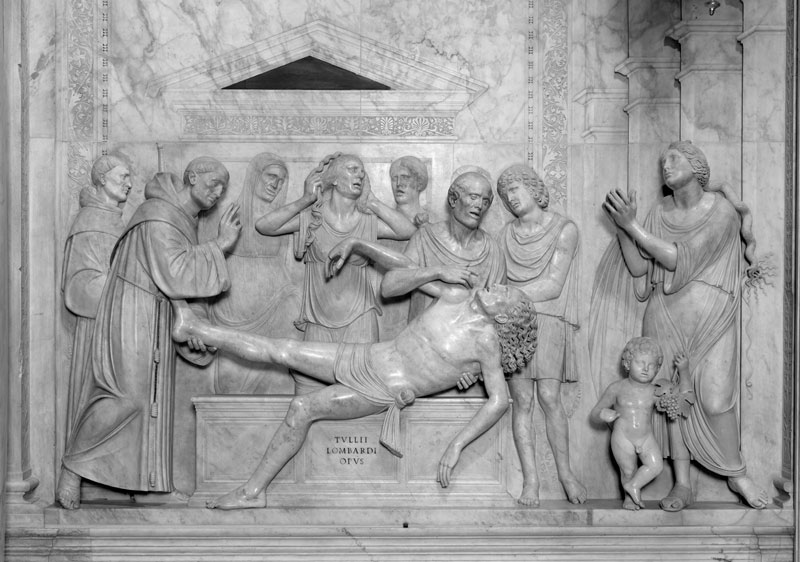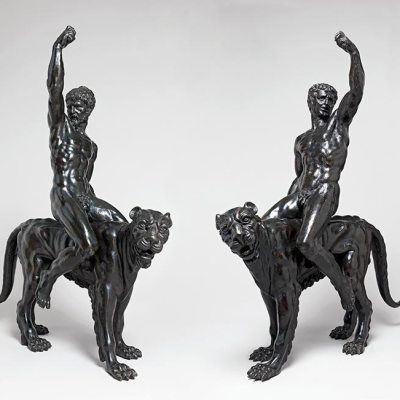This article was first published in the March 2015 issue of Apollo. Click here to subscribe to the magazine
The Sculpture of Tullio Lombardo, Anne Markham Schulz, Harvey Miller Publishers for VISTAS, €140, ISBN 9781909400177
In the Italian Renaissance, and not least for all sorts of material reasons such as the cost of marble and bronze, sculpture tended to be considerably more expensive than painting. Conversely, when it came to their respective esteem and indeed their study, painting usually had the upper hand, as no reader of Vasari’s Lives – where Tullio Lombardo (c. 1455–1532) rates only a passing mention – can fail to notice. Sculpture has been the often miserably poor relation of painting ever since, and the appearance of this handsome volume only serves to underline just how much catching up still remains to be done.
Adam (c. 1490–95), Tullio Lombardo (c. 1455–1532) Marble, ht 193cm
Metropolitan Museum of Art, New York Photo: Joseph Coscia Jr., The Photograph Studio, MMA

Tullio is unquestionably a great sculptor, yet Anne Markham Schulz’s book is the first full-dress monograph ever published on him. It is true that he cannot quite compare with the likes of Donatello and Michelangelo, but his finest achievements are nevertheless of stunning quality. The dreamily romantic tomb effigy of Guidarello Guidarelli in Ravenna, paired bust-length reliefs of Bacchus and Ariadne in Vienna and of an unidentified couple in the Museo Correr, the narrative reliefs of the life of St Anthony in Il Santo in his native Padua, and the finest elements of the tomb of Andrea Vendramin in Venice are among the most glorious marbles of the Renaissance. Arguably the pick of the bunch is Tullio’s freestanding figure of Adam, which was kidnapped from the Vendramin tomb in 1819, because the patriarch of the day thought it and its companion Eve (not by Tullio) were ‘indecent’, and eventually found its way to the Metropolitan Museum of Art in New York in 1936.
It is in no small measure thanks to the sorry recent fate of the Adam that the present book has come to be published at this time. In 2002, the new base on which it had been placed gave way and the sculpture was severely damaged. Now, finally – and unlike Humpty Dumpty – Adam has been (almost alarmingly) spectacularly put together again, and is back on display. Anne Markham Schulz, the doyenne of Venetian Renaissance sculpture studies, the first of whose 22 publications listed in her bibliography dates from as long ago as 1977, has now given us her deeply pondered reflections on his work and that of his associates and contemporaries.
Detail of Tullio’s effigy of the Doge on the Vendramin tomb (c. 1491–after 1506) in the church of SS. Giovanni e Paolo, Venice. Photo: Mauro Magliani

It would be imprudent to call this study a last word, because one of its most striking features is the frequency with which it refers to the author’s changes of mind – above all concerning issues of attribution, but also matters of chronology. The main reason is doubtless that sculpture in general – and Italian Renaissance sculpture is certainly no exception – is a minefield. A single example should suffice to illustrate the challenges it can present. Among the Santo reliefs, which were produced by a number of different sculptors over a considerable period of time, two – the Miracle of the Repentant Son and the Miracle of the Speaking Babe – are respectively signed by Tullio and his gifted brother Antonio, and in addition reassuringly documented to them by contracts and a series of payments that date them to 1500–04. A third relief of the Miracle of the Miser’s Heart (for which Tullio was awarded the contract in 1520, and received 12 payments from 1522 to 1525) is signed ‘OPVS TVLLII LOMBAR PETRI F’ and dated 1525, but according to Markham Schulz it is actually the work of his son Sante, who was only 20 at the time and by whom no absolutely secure signed works are known. If she is right – and by no means everyone agrees – then even signatures are not to be taken at face value, and only the judgement of the eye can be relied upon. The sense of single-minded focus here is almost daunting, and means that Markham Schulz does not tell us how she thinks the figure of the repentant son in Tullio’s relief relates to the dead Christ in the Gussoni Altarpiece in San Lio in Venice, generally agreed to be by his father Pietro and his workshop, which is of much the same date. Nor does she discuss the fascinating drawing of uncertain authorship representing the Miracle of the Miser’s Heart, which must be connected with the Santo project in some way or another.
Miracle of the Repentant Son (1500–04), Tullio Lombardo. Marble. Cappella del Santo, S. Antonio, Padua. Photo: Mauro Magliani

The other more fundamental difficulty that bedevils the study of sculpture is the near-ubiquity of collaboration. In the case of small-scale pieces, such as the two reliefs in Vienna and Venice mentioned above, there is no need to posit the involvement of assistants. But a monumental structure like the Vendramin tomb, which includes around 20 figures, ranging from life-size to roughly half that, as well as no fewer than eight reliefs of varying dimensions, is a very different matter. It is consequently inconceivable that Tullio did not employ assistants and, in Markham Schulz’s not unreasonable conception of how things operated, they would sometimes have combined forces with the master on individual elements and in effect have been given full responsibility for single figures. Thus, of the seven Virtues on the tomb, Markham Schulz gives two to Tullio, one to Antonio, and the remaining four are captioned ‘Assistant of Tullio Lombardo’. Tullio’s economy of approach is most evident in the images of the effigy of the doge seen from above: as the ladder-climbing Ruskin already knew, the invisible back half of the figure is effectively uncarved.
As if this sort of fine distinction were not enough of a nightmare, there has long been the additional problem of studying the pieces properly. Many of the superb photographs here, which are all in black and white, are the fruits of special campaigns; the author has taken advantage of the scaffolding to pore over the upper slopes of some of the tombs in otherwise unattainable close-up. What is more, this is the first volume in a series of publications under the aegis of VISTAS (Virtual Images of Sculpture in Time and Space), which also offers a truly breathtaking free access online component that allows works to be seen in exceptional and zoomable detail. In both guises, The Sculpture of Tullio Lombardo represents a wonderful beginning to what promises to be a revelatory series of publications.
Click here to buy the latest issue of Apollo
David Ekserdjian is Professor of History of Art and Film at the University of Leicester.



